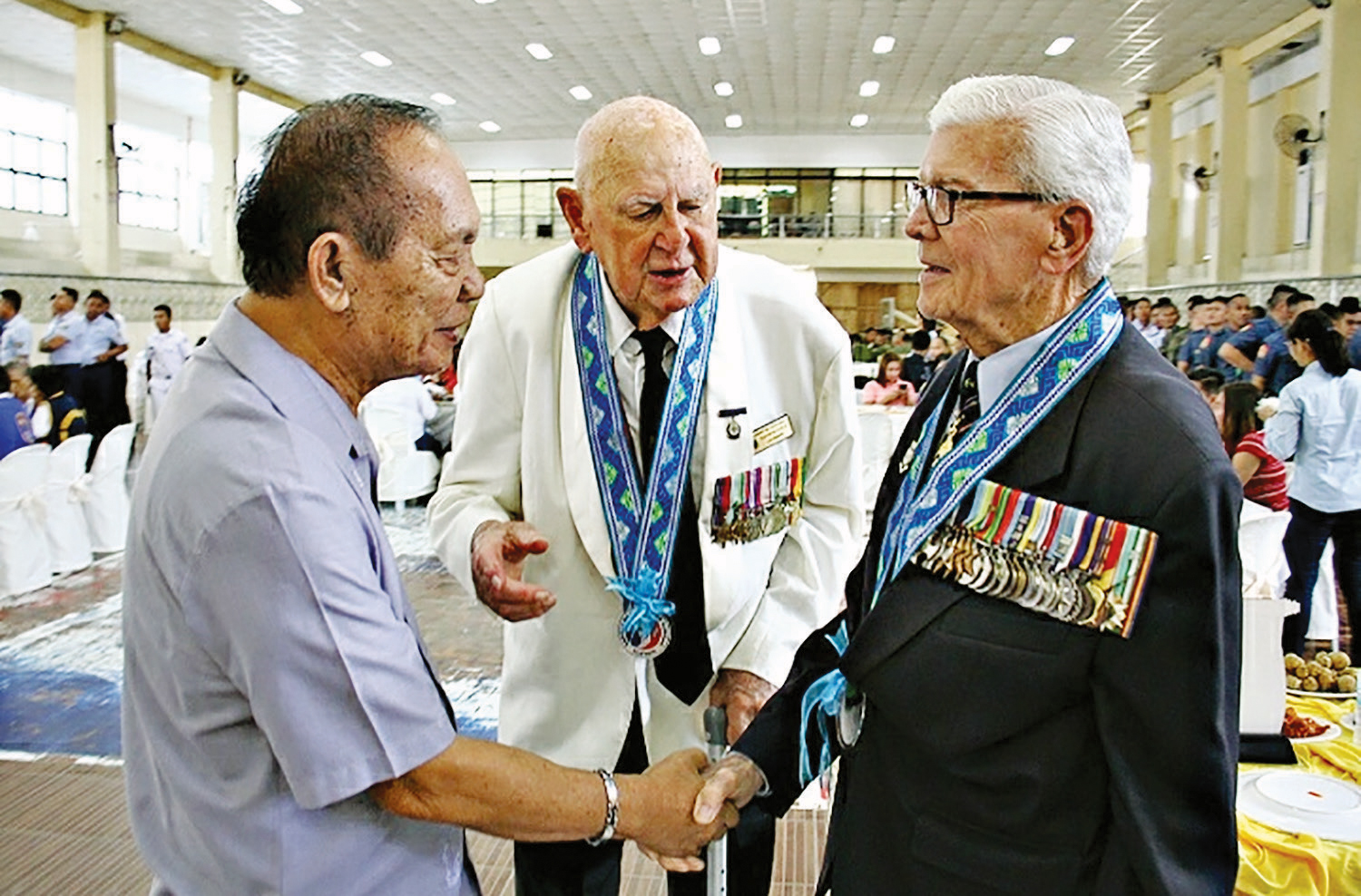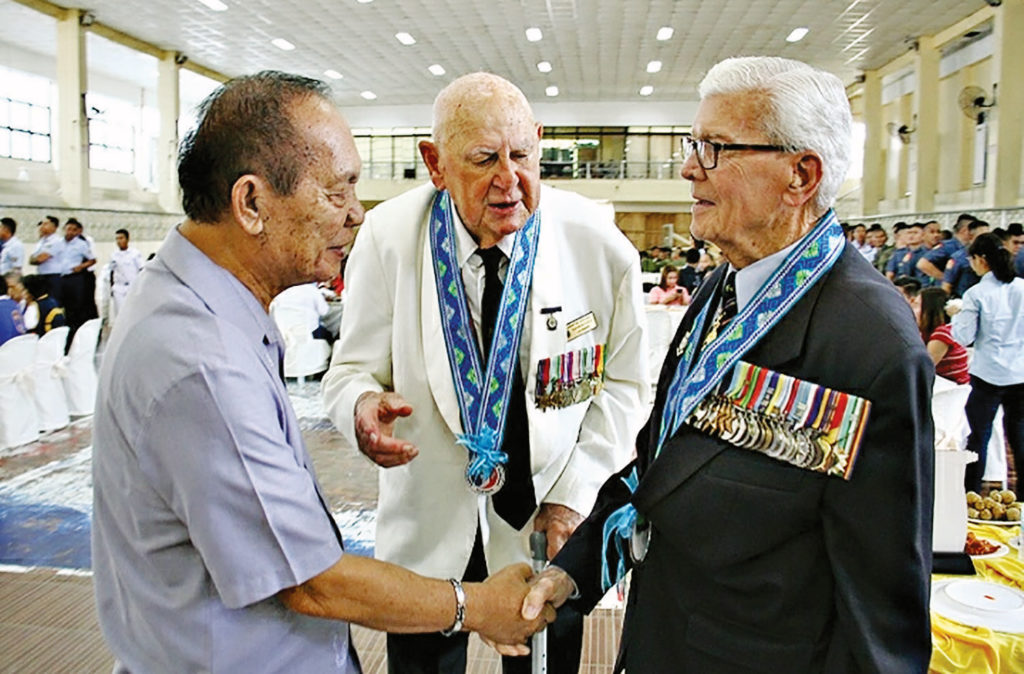
By ERWIN MASCARIÑAS
Correspondent
SURIGAO City – Two veterans who served under the Royal Australian Navy on board the heavy cruiser HMAS Shropshire were awarded here as two of the remaining survivors who took part in the last ship-to-ship naval engagement in history, the Battle of Surigao Strait.

During the opening of the three-day 75th year commemoration of the historic 1944 naval battle that paved the way for the liberation of the Philippines, David Mattiske, 95, and retired Rear Admiral Guy Griffiths, 97, said it was an odd feeling to return to Surigao Strait after 75 years in a different circumstance.
“We took a ferry from Leyte to Surigao City on October 21st (1944), and in the dawn, it was a moving feeling when we cruised right along Surigao Strait as we were approaching Surigao City. It was an odd emotional feeling, to think that we were there so many years ago, firing guns, and now it is all peaceful,” said Mattiske.
Mattiske pointed out that he is blessed with a very good memory, and that being back on the waters of Surigao brought back a lot of memories.
“I was just over 19 years old when I started my service. I knew nothing much about the navy, but I had a job in the shell room, working on the machinery that loads the shells on the escalator that took them into the guns. I still remember things very well, I remember being on the platform at the bridge when the Japanese came and listening on the radio that evening of the 24th, and then we knew that a big battle was coming,” Mattiske added.
“I’m not brave but I was not frightened that evening, I just said a little prayer that I can do my job efficiently and that all will go well,” said Mattiske.
Griffiths, who retired in 1980, shared his memory of the battle.
“I was on top at what we call the eight-inch control; we were controlling the eight-inch guns firing at the enemy, so we had a view of the battle, we could see the shells from all of the ships, illuminated with tracers going into its target the battleships Yamashiro and Fuso and eventually we saw large explosions on the ships that further illuminated the night sky, and it was an incredible site,” said Griffiths.
After World War II, Griffith studied in United Kingdom and then continued his service with RAN as an officer; he was then part of the allied United Nations naval contingent that responded to the Korean War and then commanded his own ship during the Vietnam war.
“I have served RAN for 43 years, but I haven’t seen or experienced the same intensity of a ship-to-ship battle that I’ve experienced during the Battle of Surigao Strait. HMAS Shropshire was part of the naval force that supported the landing in Lingayen Gulf in Luzon but we never had the same experience. Even my experience in Korea and with my own command of a guided missile destroyer MHAS Hobart during the Vietnam war,” said Griffiths.
Griffiths added: “War is dreadful, we need to talk to each other, create understanding, we need to talk to each other. I am sure peace is better than the millions of deaths caused by wars.”
Mattiske and Griffiths were present during the signing of surrender of the Japan in Tokyo Bay on Sept. 2, 1945 on board the battleship USS Missouri.
Disclaimer
Mindanao Gold Star Daily holds the copyrights of all articles and photos in perpetuity. Any unauthorized reproduction in any platform, electronic and hardcopy, shall be liable for copyright infringement under the Intellectual Property Rights Law of the Philippines.






